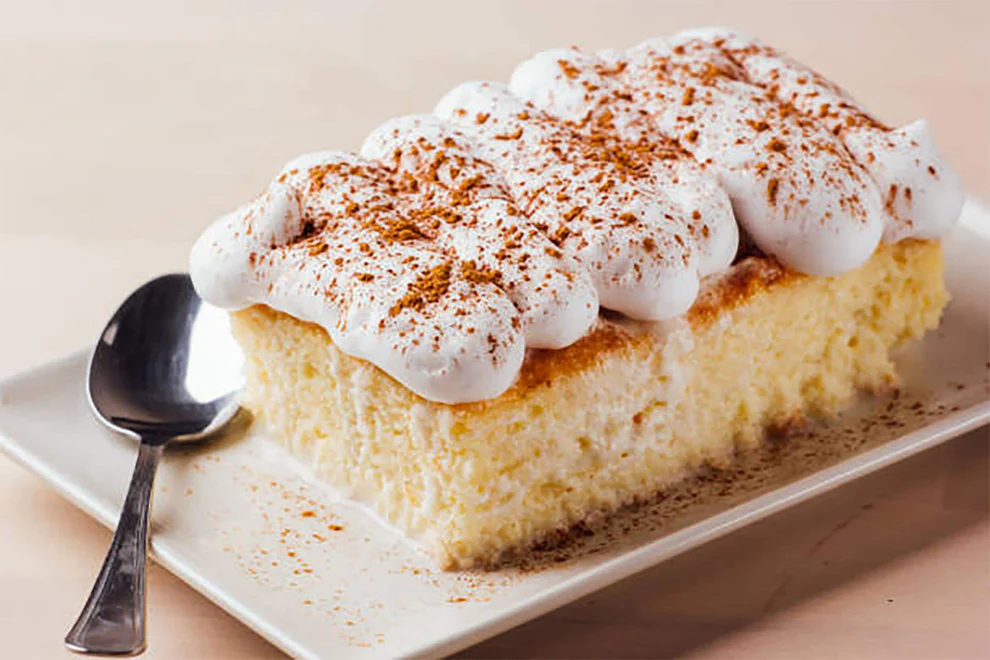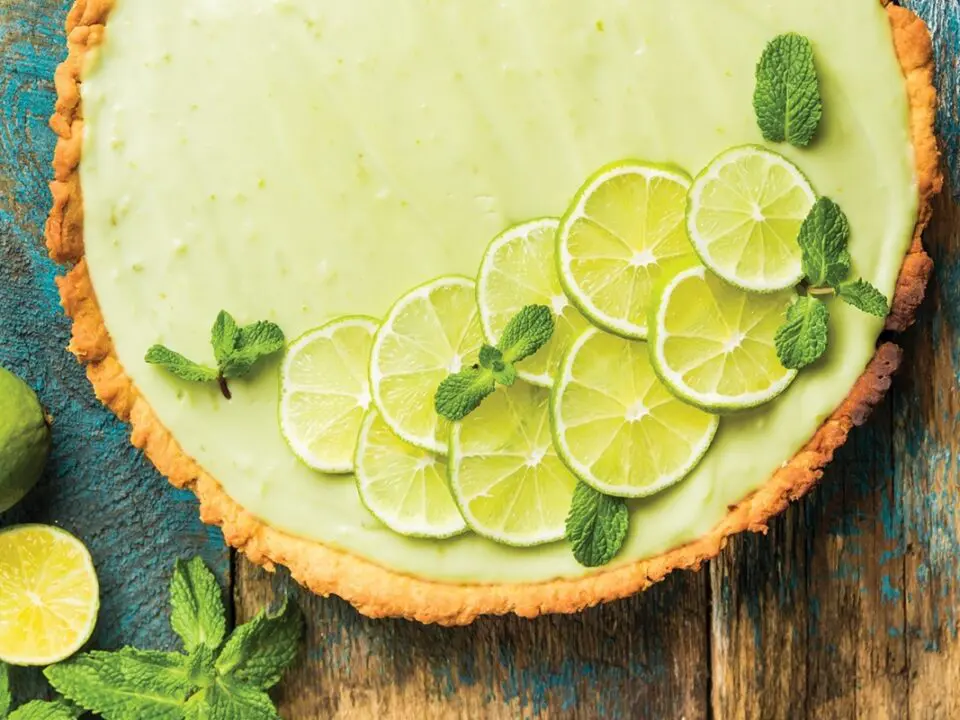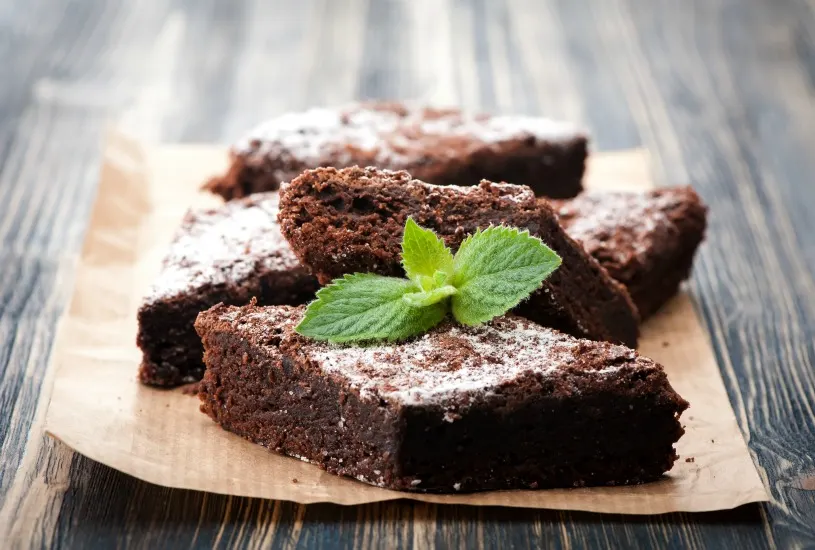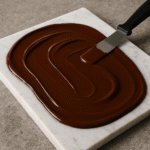
Marble Slab (or Granite Board) – Helps with Tempering Chocolate and Cooling Sugar
October 13, 2025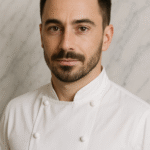
Cédric Grolet
October 13, 2025A Milk-Soaked Classic from Mexico (and Beyond)
Imagine a dessert that effortlessly balances simplicity and indulgence-that’s Tres Leches Cake for you. A light sponge that miraculously transforms into a moist, luxurious delight, thanks to its three-milk soak. But this cake is more than just a recipe; it’s a journey through history, a cultural connection, and a world of interpretations.
Where Did Tres Leches Cake Come From?
Like many great desserts, the origins of Tres Leches Cake are surrounded by stories rather than strict facts. The idea of soaking cakes in sweet liquid isn’t new — European trifles and custard-based puddings were doing it centuries ago. Those influences made their way across the Atlantic, evolving in the kitchens of Mexico and Central America.
By the 19th century, there were already milk-based cakes being baked in parts of Mexico and Nicaragua. The widespread use of canned milks — condensed and evaporated — made it possible for these desserts to thrive in warmer climates where fresh dairy spoiled quickly. Some food historians believe Nicaragua played a key role in popularising the modern version, while others credit Mexico for refining it into the light, spongy celebration cake we know today.
One thing is certain-Tres Leches became a beloved part of Latin American home cooking due to its accessibility. But it’s not just about the affordable ingredients and long shelf life. This cake is a celebration of sharing, a dessert that brings communities together. It’s sweet, generous, and familiar — the kind of dessert that reminds people of home.
Why It’s So Beloved
Every community that claims Tres Leches as its own has a special connection to it. The dessert isn’t just delicious; it carries emotional and cultural weight.
- It feels special yet simple
- The cake is made from basic ingredients — eggs, flour, sugar, and milk — yet the result feels luxurious. It’s light, rich, and deeply satisfying.
- It’s a dessert for everyone
- Tres Leches doesn’t require fancy equipment or rare ingredients. It’s baked in humble kitchens and grand restaurants alike.
- It’s all about texture
- The beauty of the cake lies in contrast. The sponge absorbs the milk like a soft sponge, creating a custard-like interior while still holding structure. The whipped topping adds airiness and freshness.
- It celebrates sharing
- This is a dessert meant for the community. It appears at birthdays, weddings, holidays, and every family gathering in between. It’s sweet, generous, and familiar — the kind of dessert that reminds people of home.
Adaptations Around the World
As Tres Leches spread beyond Mexico and Central America, it found new life in kitchens across the globe.
In South America, versions include extra layers of flavour — dulce de leche, rum, or tropical fruits like mango and passionfruit.
In the Caribbean, coconut milk sometimes replaces part of the soak, adding a subtle nutty sweetness and a hint of island character.
In the Balkans and Turkey, a similar dessert called Trileçe appeared after Latin American soap operas gained popularity there. The recipe was re-imagined with regional ingredients, often topped with a caramel glaze instead of whipped cream.
In the United States, pastry chefs have transformed Tres Leches into cupcakes, cheesecakes, or even layered desserts served in glasses. Some modern versions incorporate flavours like coffee, chocolate, or matcha.
This global adaptability shows why the cake endures: it’s a perfect blank canvas. Its foundation is humble, but the potential for creativity is endless.
Variations and Serving Ideas
Whether you’re baking a traditional version or experimenting, there are countless ways to make Tres Leches your own.
Classic Version
A soft sponge soaked in equal parts condensed milk, evaporated milk, and cream, topped with whipped cream and a light dusting of cinnamon.
Cuatro Leches
Adds a fourth milk, often dulce de leche or coconut milk, to deepen the flavour and make the texture even richer.
Fruit Variations
Fresh berries, tropical fruit, or citrus zest brighten the sweetness and add freshness.
Liquor-Infused Soak
A touch of rum, Kahlúa, or fruit liqueur brings subtle warmth and complexity to the cake.
Coconut Tres Leches
Swap one milk for coconut milk and sprinkle toasted coconut on top for a tropical finish.
Caramel or Coffee Glaze
Drizzle with caramel or espresso syrup for a modern twist that balances the sweetness.
Individual Serves
Bake in ramekins or small moulds for elegant presentation — perfect for dinner parties or café displays.
Accompaniments
- A scoop of vanilla bean or coconut ice cream
- Fresh fruit compote or coulis
- A crisp tuile or almond biscuit for texture
- A short espresso or café con leche to cut the richness
The Joy of Tres Leches
Part of the charm of Tres Leches lies in how it teaches restraint and patience. The sponge must be baked lightly, the soak poured gradually, and the cooling time respected. Rush the process, and you’ll lose the magic. But do it right, and the result is extraordinary — a dessert that manages to be both airy and decadent.
In a way, Tres Leches Cake mirrors the story of Latin America itself: a blend of cultures, shaped by history, resourcefulness, and joy in sharing. It’s the kind of dessert that makes you slow down, take a second bite, and think about how something so simple can taste so perfect.
FAQs About Tres Leches Cake
What does “Tres Leches” mean?
“Tres Leches” translates to “three milks” in Spanish. The cake is soaked in a blend of three kinds of milk — usually condensed milk, evaporated milk, and cream — which gives it its signature moist, creamy texture.
Where did Tres Leches Cake originate?
The exact origin is debated. It likely developed in Mexico or Nicaragua in the early 20th century, inspired by European soaked cakes. The introduction of canned milk products made it easier to create decadent desserts in warm climates, which helped Tres Leches spread quickly throughout Latin America.
What makes Tres Leches Cake different from other sponge cakes?
Unlike regular sponge cakes, Tres Leches is deliberately soaked after baking. The sponge is light enough to absorb liquid without falling apart, resulting in a texture that’s both airy and custard-like — a balance that defines the dessert.
Can I make Tres Leches Cake ahead of time?
Yes. In fact, it’s best when made a day in advance. Letting the cake rest overnight allows the milk mixture to soak through evenly, creating the perfect texture and flavour balance.
Does Tres Leches Cake need to be refrigerated?
Yes, always refrigerate it. The milk mixture and whipped topping need to stay cold. Store it covered in the fridge for up to three days for the best quality.
Can I make it without condensed milk?
You can, but condensed milk adds sweetness and richness that are hard to replicate. If you prefer less sweetness, try reducing the amount of condensed milk rather than removing it entirely.
What toppings go well with Tres Leches Cake?
Traditional toppings include whipped cream and a sprinkle of cinnamon. For extra flavour, add fresh fruit like strawberries, mango, or berries, or drizzle caramel, chocolate, or coffee syrup over the top.
Is Tres Leches Cake gluten-free?
Not usually, since it’s made with wheat flour; however, you can substitute a gluten-free flour blend and still achieve a similar texture if you whip the eggs well and handle the batter gently.
Can I freeze Tres Leches Cake?
It’s not ideal to freeze once soaked, as the texture can separate when thawed. You can, however, bake and freeze the sponge portion, then thaw and soak it with the milk mixture before serving.
What drinks pair well with Tres Leches Cake?
Strong coffee, espresso, or café con leche is a classic pairing that cuts through the sweetness beautifully. A light dessert wine or coconut-flavoured liqueur also complements its creamy richness.
